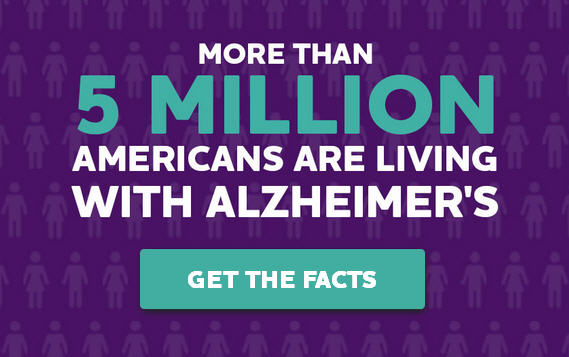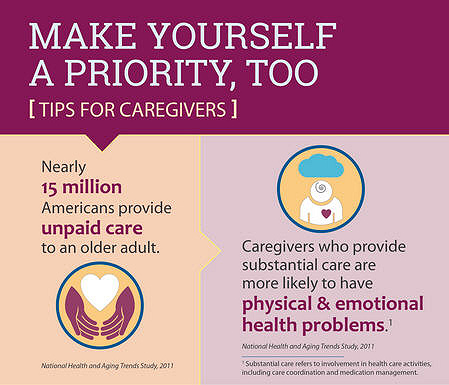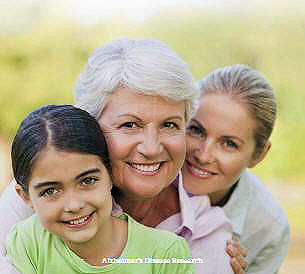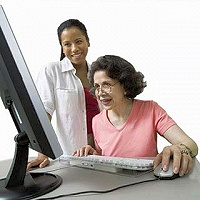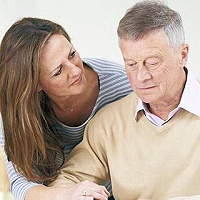(NIA) Exercise and physical activity are good for just about everyone, including older adults. No matter your health and physical abilities, you can gain a lot by staying active. In fact, in most cases you have more to lose by not being active.
Benefits of Physical Activity
Here are just a few of the benefits. Exercise and physical activity:
- Can help maintain and improve your physical strength and fitness.
- Can help improve your ability to do the everyday things you want to do.
- Can help improve your balance.
- Can help manage and improve diseases like diabetes, heart disease, and osteoporosis.
- Can help reduce feelings of depression and may improve mood and overall well-being.
- May improve your ability to shift quickly between tasks, plan an activity, and ignore irrelevant information.
The key word in all these benefits is YOU — how fit and active you are now and how much effort you put into being active. To gain the most benefits, enjoy all 4 types of exercise, stay safe while you exercise, and be sure to eat a healthy diet, too!
4 Types of Exercise
Exercise and physical activity fall into four basic categories—endurance, strength, balance, and flexibility. Most people tend to focus on one activity or type of exercise and think they’re doing enough. Each type is different, though. Doing them all will give you more benefits. Mixing it up also helps to reduce boredom and cut your risk of injury.
Though we’ve described each type separately, some activities fit into more than one category. For example, many endurance activities also build strength. Strength exercises also help improve balance.
Endurance
Endurance, or aerobic, activities increase your breathing and heart rate. They keep your heart, lungs, and circulatory system healthy and improve your overall fitness. Building your endurance makes it easier to carry out many of your everyday activities.
- Brisk walking or jogging
- Yard work (mowing, raking, digging)
- Dancing
Strength
Strength exercises make your muscles stronger. Even small increases in strength can make a big difference in your ability to stay independent and carry out everyday activities, such as climbing stairs and carrying groceries. These exercises also are called “strength training” or “resistance training.”
- Lifting weights
- Using a resistance band
- Using your own body weight
Balance
Balance exercises help prevent falls, a common problem in older adults. Many lower-body strength exercises also will improve your balance.
- Standing on one foot
- Heel-to-toe walk
- Tai Chi
Flexibility
Flexibility exercises stretch your muscles and can help your body stay limber. Being flexible gives you more freedom of movement for other exercises as well as for your everyday activities.
- Shoulder and upper arm stretch
- Calf stretch
- Yoga
Almost anyone, at any age, can safely do some kind of exercise and physical activity. You can be active even if you have a long-term condition, like heart disease, diabetes, or arthritis. Staying safe while you exercise is always important, whether you’re just starting a new activity or you haven’t been active for a long time. Be sure to review the specific safety tips related to endurance, strength, balance, and flexibility exercises.
Talking with Your Healthcare Provider
Most people don’t need to check with their health care provider first before doing physical activity. However, you may want to talk with your health care provider if you aren’t used to energetic activity and you want to start a vigorous exercise program or significantly increase your physical activity. Your activity level is an important topic to discuss with your health care provider as part of your ongoing health care.
Ask how physical activity can help you, whether you should avoid certain activities, and how to modify exercises to fit your situation.
Other reasons to talk with your health care provider:
- Any new symptoms you haven’t yet discussed
- Dizziness, shortness of breath
- Chest pain or pressure
- The feeling that your heart is skipping, racing, or fluttering
- Blood clots
- An infection or fever with muscle aches
- Unplanned weight loss
- Foot or ankle sores that won’t heal
- Joint swelling
- A bleeding or detached retina, eye surgery, or laser treatment
- A hernia
- Recent hip or back surgery
Being physically active and eating a healthy diet are keys to a healthy lifestyle. But what does “healthy eating” really mean?
Healthy eating:
- Emphasizes vegetables, fruits, whole grains, and fat-free or low-fat milk and milk products.
- Includes lean meat, poultry, fish, cooked dry beans and peas, eggs, and nuts.
- Is low in saturated fats, trans fats, salt, and added sugars.
- Balances the calories from foods and beverages with calories burned through physical activity so that you can maintain a healthy weight.
Visit What’s on Your Plate?: Smart Food Choices for Healthy Aging, an online guide to healthy eating for older adults. Find out what you need to know about food groups, serving sizes, food labels, and more.
Go4Life Tip Sheets
The following tip sheets from the National Institute on Aging at the NIH free program, Go4Life. are filled with information about the benefits of exercise, how to stay motivated, staying safe while exercising, and nutrition tips. These are just a few of the tips sheets that adults 50 and older can read on the Go4Life website.
A
- Actividades familiares divertidas y saludables (Family Activities…) (767.71 KB)
- Actividades para todas las estaciones del año (Activities for All Seasons) (907.77 KB)
- Activities for All Seasons (1.25 MB)
B
- Be Physically Active without Spending a Dime (272.73 KB)
- Beneficios prácticos del ejercicio y la actividad física (Real-Life Benefits…) (555.27 KB)
- Biking Safely (118.55 KB)
- Building Up the Benefits (660.29 KB)
C
- Camine para su salud (Walking for Your Health) (433.68 KB)
- Caregivers and Exercise—Take Time for Yourself (666.8 KB)
- Choosing an Active Retirement Community (1.32 MB)
- Choosing Healthy Restaurant Meals (807.62 KB)
- Cómo medir el progreso de su plan de ejercicios (Measuring Your Fitness…) (608.04 KB)
D
- Diviértase. ¡Manténgase activo con sus nietos! (Have Fun. Be Active with Your Grandchildren!) (840.84 KB)
- Do Exercise and Physical Activity Protect the Brain? (132.67 KB)
- Drinking Enough Fluids (570.39 KB)
- Driving Safely (620.02 KB)
E
- El ejercicio y la diabetes tipo 2 (Exercise and Type 2 Diabetes) (73.74 KB)
- Empezar a hacer ejercicios de nuevo después de una pausa (Starting to Exercise Again…) (411.17 KB)
- Escoja opciones inteligentes a la hora de comer (Smart Food Choices) (74.72 KB)
- Exercise and Osteoarthritis (707.89 KB)
- Exercise and Osteoporosis (115.21 KB)
- Exercise and Type 2 Diabetes (610.48 KB)
- Exercise for People with Low Vision (647.54 KB)
- Exercise Tips for Travelers (343.39 KB)
- Exercise to Improve Your Balance (112.79 KB)
- Exercising in a Safe Environment (762.72 KB)
- Exercising in Cold Weather (805.19 KB)
- Exercising Safely in Hot Weather (753.41 KB)
F
- Fall Proofing Your Home (108.9 KB)
- Family Activities for Fun and Good Health (862.12 KB)
- Finding Activities You Enjoy (856.11 KB)
- Finding the Right Fitness Trainer (986.69 KB)
- Fitness Centers Aren’t Just for “Kids” (659.03 KB)
- Fitness Clothes and Shoes (653.81 KB)
- Fitting Exercise and Physical Activity into Your Day (869.59 KB)
- Food Safety When Cooking (860.76 KB)
- Foot Care (583.18 KB)
- Fun Ideas for Being Active All Year (921.32 KB)
G
- Get Active! Your Keys to Success (477.69 KB)
- Get Moving! Motivating the 50+ Community (707.57 KB)
- Getting Started: What’s Your Fitness Level? (781.35 KB)
- Give Me an A for Activity! Motivating Others To Be Physically Active (787.61 KB)
- Go4Life Buddy Agreement (925.88 KB)
H
- Hacer ejercicio en un entorno seguro (Exercising in a Safe Environment) (453.96 KB)
- Have Fun. Be Active with Your Dog! (655 KB)
- Have Fun. Be Active with Your Grandchildren! (660.15 KB)
- Healthy Snacking (626.4 KB)
- Heart Health (103.14 KB)
- Help Your Staff Promote Physical Activity (540.83 KB)
- Help, I’m Stuck! Getting Over that Exercise Plateau (702.01 KB)
- Helping Older Family Members Become More Active (823.11 KB)
- Helping People with Alzheimer’s Disease Stay Physically Active (850.23 KB)
I
- Imaginative Events to Promote Physical Activity (1.34 MB)
- Include All 4 Types of Exercise (530.3 KB)
- Incluya los 4 tipos de ejercicios (Include All 4…) (632.96 KB)
- Incorporar el ejercicio y la actividad física en su día (Fitting Exercise and Physical Activity into Your Day) (162.2 KB)
- Indoor Activities (739.53 KB)
L
- La salud del corazon (Heart Health) (643.97 KB)
- Listo para comenzar: ¿cuál es su estado físico? (Getting Started…) (288.46 KB)
M
- Maintaining a Healthy Weight (649.93 KB)
- Making a Plan to Be More Active (645.19 KB)
- Making Meetings More Active (537.94 KB)
- Making Smart Food Choices (751.91 KB)
- Making Your Fitness Center Comfortable for Members 50+ (258.05 KB)
- Mantener la motivación para mantenerse activo (Staying Motivated to Stay Active) (652.43 KB)
- Mantener un peso saludable (Maintaining a Healthy Weight) (441.12 KB)
- Measuring Your Fitness Progress (864.02 KB)
- Motivating Your Patients To Be Active (735.71 KB)
N
- Nutrition Facts: Reading the Label (692.31 KB)
O
- Overcoming Barriers to Exercise: No More Excuses (690.01 KB)
- Overcoming Roadblocks to Healthy Eating (507.08 KB)
P
- Preventing Falls (396.8 KB)
- Protect Your Eyes When You Exercise (289.8 KB)
R
- Reaching Your Fitness Goals (1019.93 KB)
- Real-Life Benefits of Exercise and Physical Activity (841.1 KB)
S
- Seguro mientras hace ejercicios y actividades físicas (Staying Safe…) (495.34 KB)
- Serving and Portion Sizes (370.59 KB)
- Shopping for Food That’s Good for You (685.65 KB)
- Starting to Exercise Again after a Break (879.58 KB)
- Stay Safe! Use Proper Form While Strength Training (855.71 KB)
- Staying Motivated to Stay Active (669.57 KB)
- Staying Safe During Exercise and Physical Activity (611.14 KB)
- Sun Safety (126.46 KB)
- Supporting Your Employees’ Physical Activity Goals (1.02 MB)
T
- Talking with Your Patients about Physical Activity (792.7 KB)
- Three Questions To Ask Your Doctor About Exercise (688.9 KB)
W
- Walking for Your Health (777.65 KB)
- Walking Safely in Rural Areas (755.9 KB)
- What Does “Healthy Eating” Mean? (739.6 KB)
- Work Out at Work (238.38 KB)
Y
- Yoga and Older Adults (640.23 KB)
Español
- ¡Conviértase en una persona activa! Las claves para triunfar (Get Active! Your Keys to Success) (365.42 KB)
- ¡Saque una buena calificación por motivar a otros! (Give Me an A…) (266.07 KB)
- ¿Qué significa realmente “comer saludablemente”? (What Does “Healthy Eating”…) (684.81 KB)

https://go4life.nia.nih.gov/tip-sheets
National Institute on Aging
